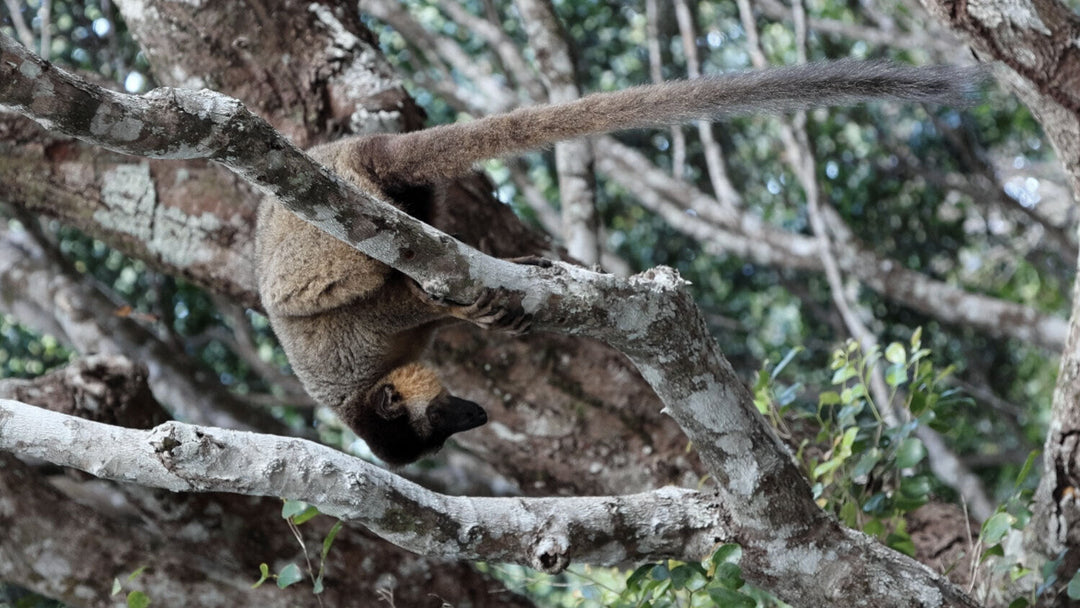What are the deer species in Yorkshire?
There are three main species of deer found in Yorkshire.
In this guide, we share some top tips for identifying them, how to tell them apart in camera trap images and where you can see these deer in Yorkshire.
How many different types of deer are there in Yorkshire?
There are three main species of deer found in Yorkshire: red deer, roe deer and fallow deer. Red and roe are Yorkshire’s only native deer species - although fallow have been here for a long time - it’s believed they were introduced by the Norman’s sometime around the 11th century. There are occasional records of muntjac deer, mainly towards the south of the county. Sika deer sightings are also occasionally reported, nearer the Yorkshire Dales. Both muntjac and sika deer were introduced to Britain within the last 200 years. Chinese water deer are the only other species of deer in the UK: although they are not found in Yorkshire and are currently mainly present in the southeast of England.
How do you tell apart red, roe and fallow deer?
There are key characteristics of each deer species that help with confident identification and the clues are mostly on the rump and face! Coat colour can be misleading when identifying deer, as they can be highly variable and change colour between summer and winter.
Red deer identification
Red deer are the largest land mammal in Britain, with the males (stags) weighing up to 190kg and reaching 1.37m tall. That’s about 7-8 times the weight of a roe deer! Unlike the more solitary roe deer, red deer can form large herds, with a preference for grazing on grasses and small shrubs. Their red summer coat changes to brown in winter and they have a buff-coloured rump with a short tail.

Red deer staring into the camera trap - North York Moors
Where can you see red deer in Yorkshire? There are records of red deer in many places across the county. Our camera traps have recorded them most often in the larger forests on the southeast side of the North York Moors.
How to identify red deer in camera trap footage: Their sheer size! Compare them to any other species you see on your camera trap to gain some perspective.
Fallow deer identification
Fallow deer form herds and can weave intricate trails across the forest floor from repeated use of the same routes. They are a medium-large sized deer – between the sizes of red and roe – with the largest bucks (males) weighing up to 93kg and 0.93m tall. The palmate antlers of the bucks have a distinctive shape, loosely resembling the palm of a hand with extended fingers. Fallow deer prefer to graze on grasses and small shrubs. Their darker (black or brown) hind markings and long tail are a distinctive characteristic, appearing very different to the rumps of red and roe deer.

Fallow deer in a broadleaf woodland on the North York Moors

Fallow deer have distinctive markings surrounding their long tail
Roe deer identification
Roe deer are a common sight in Yorkshire and they account for 95% of our deer footage on the North York Moors! They weigh between 10-25kg and reach around 0.75m tall, browsing on a wide variety of plants and trees. Roe deer have a rusty red coloured coat in the summer that turns grey in the winter. Compared to red and fallow deer, roe are more solitary animals, although they will group up more in open areas. Roe deer have unique facial markings that help with identification: black eyes, nose and mouth and a white chin. They have a white rump but no tail, helping to distinguish them from roe and fallow deer.

Roe deer, North York Moors.
Where can you see roe deer in Yorkshire? Roe deer are present all across Yorkshire. Our trail cameras have picked them up in every forest we've surveyed on the North York Moors.
How to identify roe deer in camera trap footage: The black facial markings of roe deer will often stand out in contrast to the lighter chin.

The contrast of the black and white facial markings of roe deer
Camera trap footage and records of deer on the North York Moors
Since 2018, NatureSpy has had 50 camera traps running on the North York Moors. These cameras are part of the Yorkshire Pine Marten Project, but of course, we don’t get to choose which species pay our cameras a visit! During the past 4 years we’ve created close to 6,000 deer records in the area.
Camera trap setup tips for deer
Deer are a straight forward species to monitor with camera traps. For starters, all deer species are of a decent size, so there’s little concern that your camera might not trigger. Woodlands are one of the most straight forward places to monitor deer as it’s easier to spot field signs and you’ll have plenty of options of trees to attach your camera to. Look for field signs such as animal trails worn into woodlands by repeated use, as deer – amongst many other woodland species – will use these trails like highways in the forest.
What is a good camera trap for watching deer?
You don't need a special camera trap setup for monitoring deer: your decision will be largely down to the quality of photos or video you want to record. Our current favourite at NatureSpy is the Browning Recon Force Elite HP5. The Bushnell Core DS-4K is also an excellent option!
Want to learn more about our deer species in the UK?
Check out the British Deer Society and Mammal Society web pages: they provide many high quality resources and were both used as references for producing this guide.
-----
Article by Ed Snell


